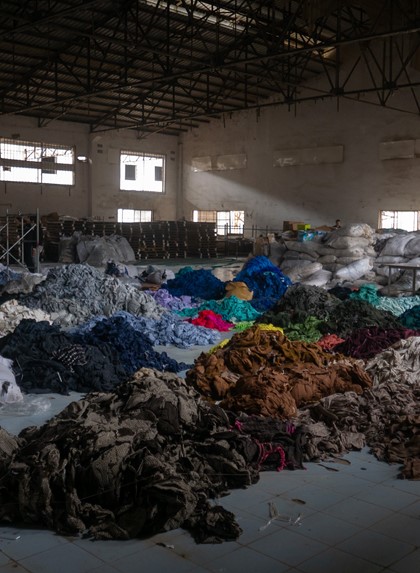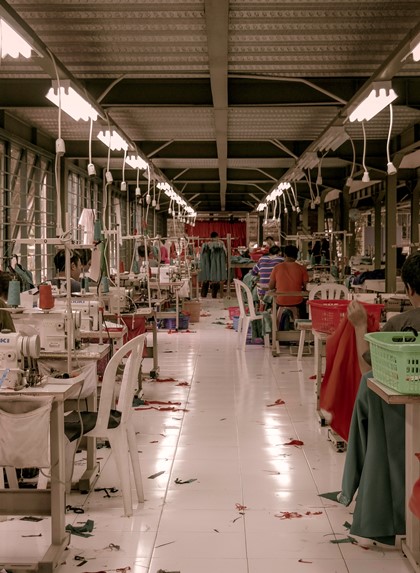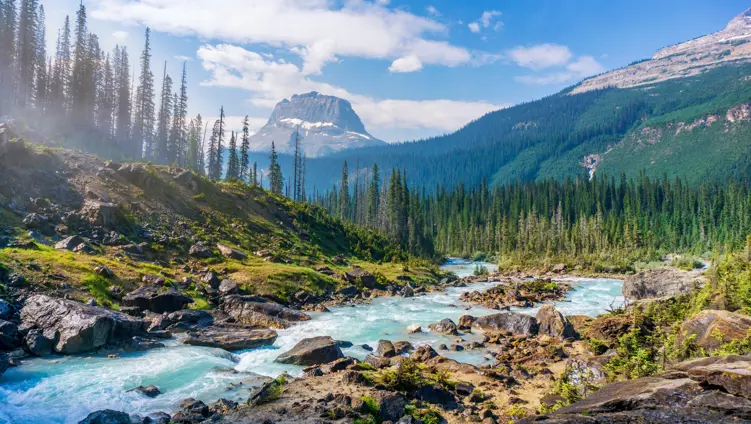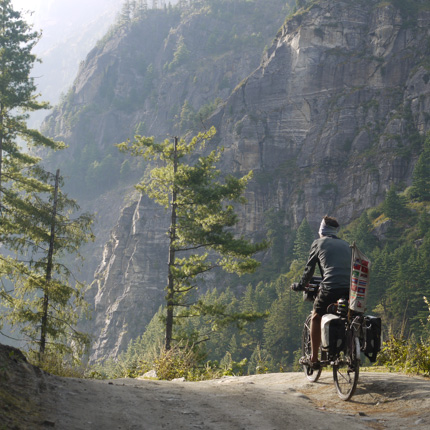Capitalism, with its relentless pursuit of consumption and growth, is the driving force behind the climate emergency. With less than ten years left to act, we’re hurtling towards a future which would see the earth become uninhabitable. In the case of the outdoor industry, we’re quite literally wearing away the ground beneath our feet; within decades there may be no ice to climb, and not even the most expensive, high-tech gear would protect us from a burning planet. Dropping a whole month’s paycheque in your nearest Patagonia store won’t stop the last patch of snow melting away, and let’s be honest, once the serotonin wears off, it won’t make you feel any better either.
But what about the actions brands are taking? After all, TNF x Gucci is a collaboration “with sustainability at its heart.” Sure enough, the collection utilises materials such as ECONYL – regenerated nylon made from ocean waste – and sources its packaging from sustainably managed forests. Both brands tout their eco-focused mission statements and commitments to corporate responsibility on their websites; Gucci’s Equilibrium programme in particular outlines some exciting targets, built on a foundation of inclusivity, diversity and authentic expression – all of which the outdoor industry could use a little more of. It’s ambitious stuff. But like the promises made by so many other brands, often that’s all it is: a promise. And those are easy to break.
Evaluating brands’ sustainability claims is no easy task. Whereas a decade ago only a few clothing retailers would even consider highlighting their ecological impact, nowadays companies must race to keep up with increasing consumer awareness. Gucci’s 2020 Sustainability Principles report contains a plethora of commitments, but the devil – quite literally – is in the detail. The report details that suppliers are required to ensure garment workers' wages correspond to legal standards – but simultaneously indemnifies Gucci from any claims or complaints made by workers or employees, securing them against legal liability. Likewise, VF’s Global Compliance Principles state that garment workers have a right to fair compensation, but makes no mention of legally enforceable contracts. The North Face’s U.K. website invites readers to click through and learn about the ways its parent company is working to bring about real change in countries such as Bangladesh. Unfortunately, the link doesn’t work.
There is no such thing as a perfect environmentalist, or a completely “sustainable” company; when you’re producing “stuff”, it’s impossible. But transparency is no longer radical – it must be the bare minimum. In place of lengthy reports detailing their beliefs and endeavours, brands should be publishing hard data: names and numbers. Who their suppliers are, how much they pay, where they source their materials. The TNF x Gucci collaboration might use regenerated nylon, yet fails to fully commit to 100% organic cotton – and when a single pair of their jersey shorts is priced at £600, it’s not because they can’t afford it. Conventional cotton is one of the world’s most polluting crops, and its production has devastating human and environmental impacts – but with a direct, accessible alternative, it’s also one of the easiest to avoid. Its use alone is more than enough to negate any of the collaboration's claims of “respect for nature”.
The fashion industry is plagued by numerous abuses of social and environmental justice, from the exploitation of workers, to the use of hazardous chemicals and dependence on fossil fuels – there’s a reason it’s the second most polluting industry worldwide. Brands know it, but they also know cutting pollution means cutting production, consumption, and ultimately profits. So instead of doing the work and shouting it from the rooftops, they leave it to us to filter through the details, again shifting the onus of responsibility. To buy, or not to buy - that’s our problem. Any damage caused along the way? That’s our problem too. “We’re just helping you get out there!” they call, whilst churning out fleeces in eleven different colours.
As an outdoor community, we can be more than just “good” consumer-citizens, clinging to the belief that we are saving the planet by buying one recycled down jacket at a time. We could spend our lifetimes scouring product labels and transparency reports, but it makes little difference if we’re only doing so to inform our personal purchase decisions. Individual action will never be enough to combat a systemic issue. Instead of rolling out the well-worn phrases of “buy the best you can afford,” or “there’s no such thing as bad weather, just bad clothing,” we should be organising. Lobbying governments to ban the use of bio-accumulating fluorocarbons, instead of just purchasing PFC-free, and demanding brands commit to legally binding agreements, instead of ‘encouraging’ suppliers to pay their workers a living wage. There should be no such thing as “bad” clothing; whilst we continue to excuse it by presenting a “better”, more sustainable (and often more expensive) alternative, we will continue to break apart the landscapes we claim to love.










